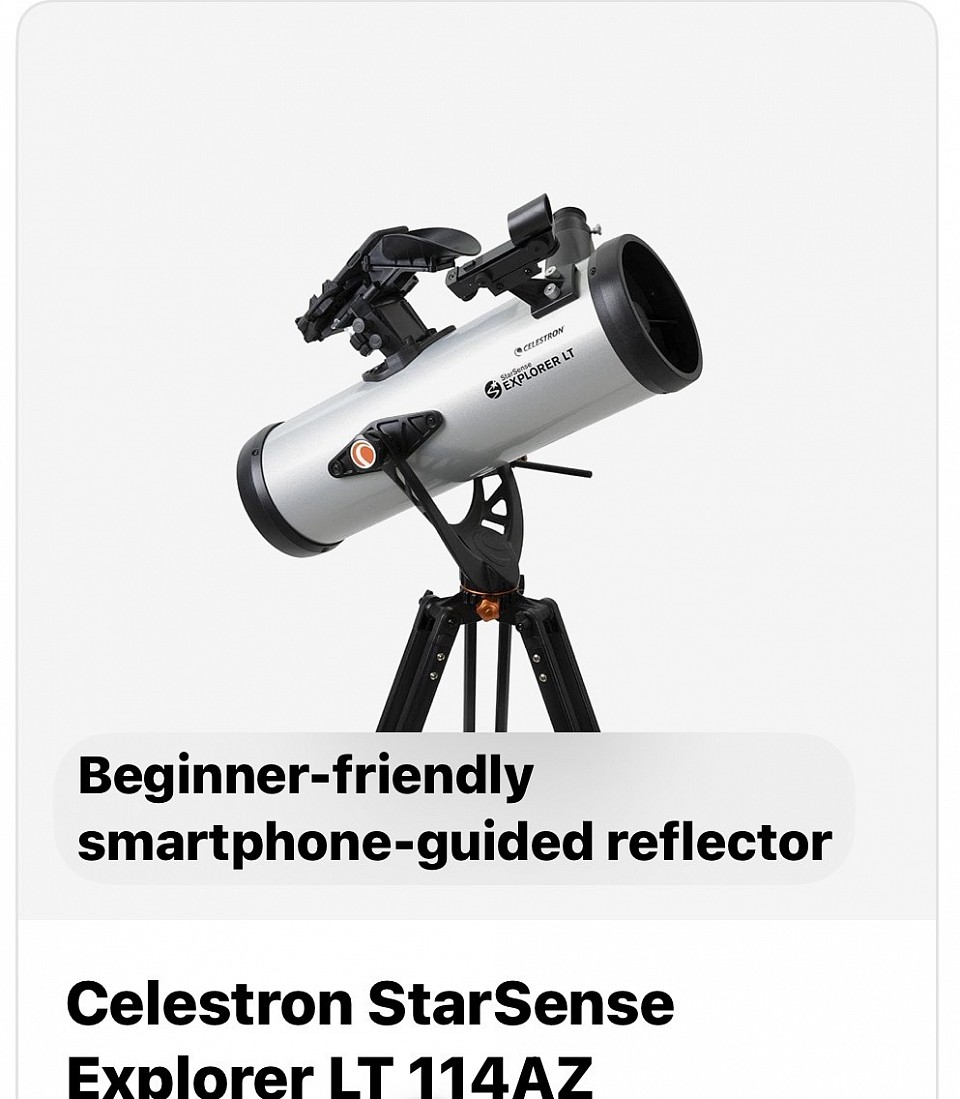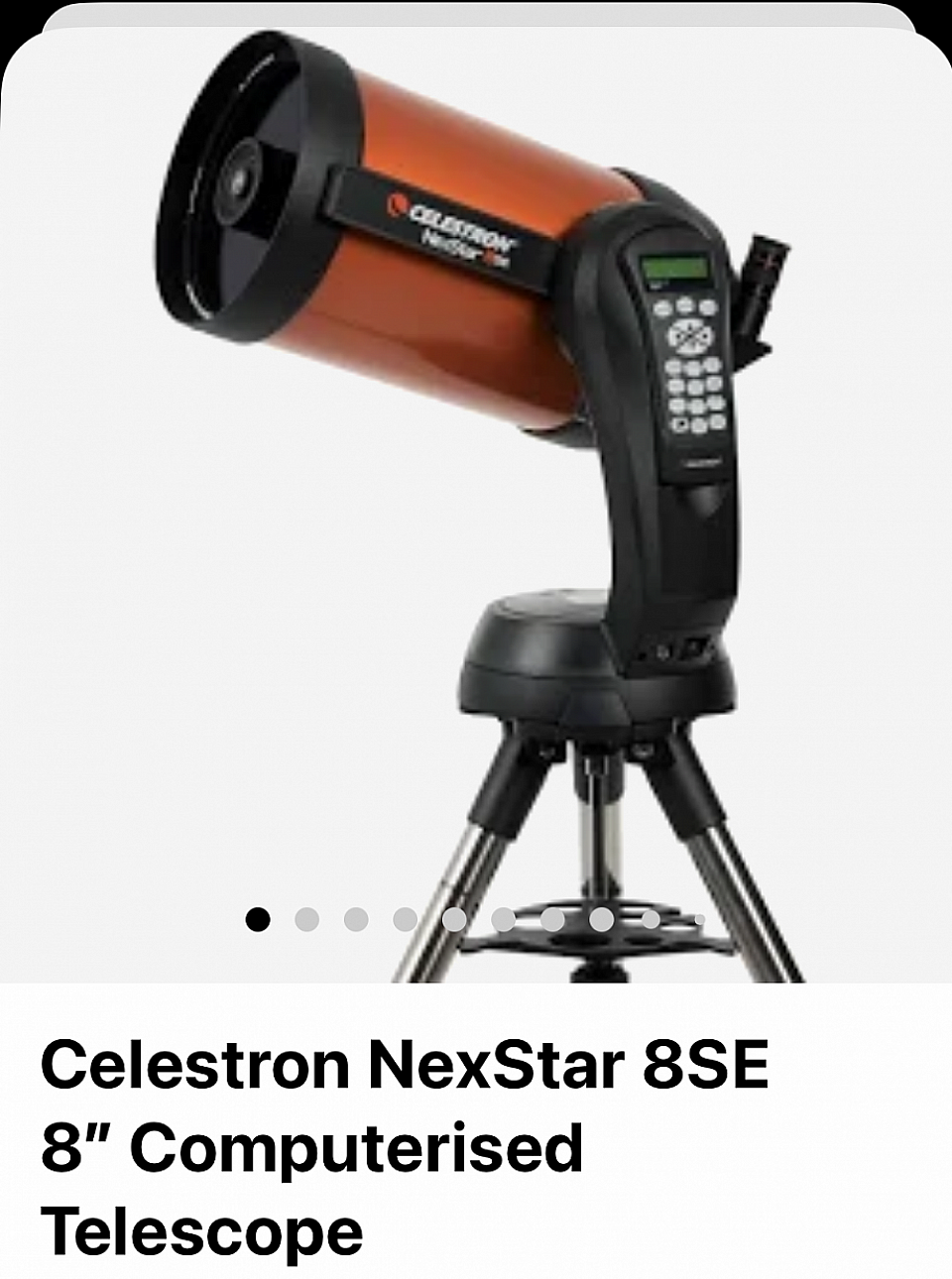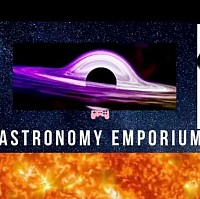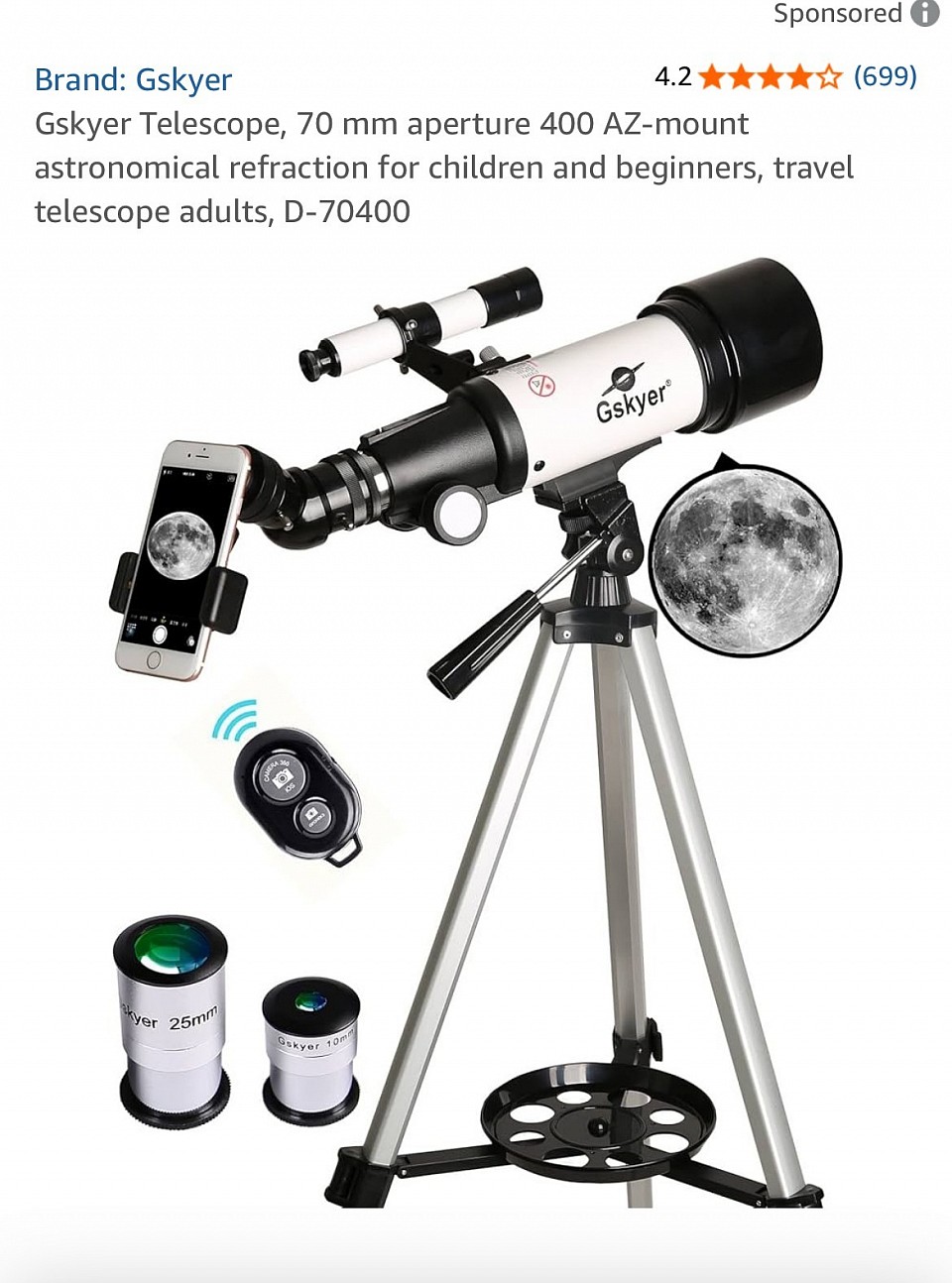Astronomy Emporium Blog – Stargazing Tips, Reviews & Skywatching Guides
✨ Night Sky Highlights – July 2025
🌓What is the dot next to the Moon tonight?
From July 28 to August 3, 2025, the Moon will visit the constellations Leo, Virgo, Libra, and Scorpius. This week, the brightest dots near the Moon will be the red planet Mars (mag 1.5), as well as bright stars Spica (mag 0.9) from Virgo and Antares (mag 1.0) from Scorpius. The Moon will reach its First Quarter phase on August 1 and will be clearly visible most of the week.
🌕 Full Moon – July 21
🌠 Delta Aquariid Meteor Shower – Begins July 12, peaks July 29
🔭 Saturn is visible in the early morning sky this month
🌌 The Summer Triangle (Vega, Deneb, Altair) shines brightly overhead
AstroGrandad Tip✅
Use a stargazing app or sky map to spot these — and bring binoculars!
The best selling telescope online 2025
Did you know
Based on data compiled by Telescope Advisor, the best-selling telescope online in 2025 is the Gskyer 70 mm Aperture 400 mm AZ‑Mount refractor telescope—selling an estimated 4,000–10,000 units per month with over 20,000 reviews on Amazon
🚀 Why it’s such a consistent best-seller?
(Basically, it’s because it’s cheap !)
Incredibly affordable, typically retailing under $100 (£80–£120), ideal for beginner budgets
Fully‑coated glass optics, modest 70 mm aperture and 400 mm focal length deliver decent views of the Moon and bright planets
Comprehensive kit:
eyepieces, PLASTIC
Barlow lens, PLASTIC
smartphone adapter, PLASTIC
tripod, PLASTIC
carry bag—all included (probably) PLASTIC
Low barrier to entry: light, portable, easy setup—perfect for kids or casual users Yeah right!
NOT EVEN A LOW BARRIER ENTRY!
Community feedback is mixed:
While many appreciate its value, others on Reddit note the tripod is flimsy, chromatic aberration is common, and detail beyond the Moon and brightest planets is limited:
“This is a child’s toy … mount is garbage … limited aperture”
“The scope is poor quality; a larger Dobsonian would deliver far better performance”
In short, it’s a beginner-focused, low-risk entry telescope—not professional grade, but hugely popular.
It will more than likely put you and your child off of Stargazing altogether.
‼️NEVER EVER BUY THIS TELESCOPE FOR YOURSELF OR YOUR CHILDREN‼️
It is basically a substandard, cheap plastic Toy.
I am not even going to give you a link to purchase it!!!
If your are looking for a decent, entry level telescope try one the next best sellers below:

2nd highest sold telescope on the internet The Celestron Starsense Explorer 114AZ (image credit ChatHPT AI)
Alternatives: higher performing telescopes that also sell well
If you’re willing to spend more or want better optics and build quality, two standout Celestron models are widely recommended:
The 2nd best selling telescope online.
Celestron StarSense Explorer LT 114AZ and other LT models
These use smartphone-based guided pointing (StarSense app), making them very beginner-friendly.
They often receive “best-seller” badges on retailer sites . Reviews cite ease of use and optical value, though the mounting hardware can feel underwhelming .
The StarSense Explorer LT 114AZ is a user-friendly Newtonian reflector with smartphone-guided navigation—ideal for beginners who want help finding celestial objects without frustration.
Mount:
Manual alt-azimuth mount with slow-motion controls
Works seamlessly with the StarSense app, using your phone to guide you to stars, planets, and deep-sky objects
Included Equipment:
Two eyepieces (typically 25mm and 10mm)
Red dot finder scope
Tripod
StarSense app access (iOS & Android compatible)
Accessory tray
What You Can See:
The Moon: excellent craters and detailPlanets: clear views of Jupiter’s moons, Saturn’s rings, Mars’ color and phase
Bright deep-sky objects: Orion Nebula, Pleiades, Andromeda Galaxy (under dark skies)
Buyer Feedback:
⭐ “It’s like GPS for the stars. I found Saturn in under 2 minutes!” – Verified Buyer
⭐ “Easy setup, great views, and my kids love using the phone guidance.” – Amazon Reviewer
⚠️ “The mount could be sturdier, but for the price it’s fantastic.” – Reddit /r/telescopes
Verdict:
An excellent beginner telescope that makes finding night sky targets easier than ever—perfect for casual astronomers, kids, and first-time stargazers.
Check price on Amazon

Amazingly 3rd placed most sold telescope on the internet is the Celestron Nexstar 8SE (image credit chatGPT AI)
The 3rd best selling telescope on the Internet
Celestron NexStar 8SE 8″ Computerised Telescope
Computerised GoTo mount with a database of ~40,000 celestial objects
Excellent 8″ aperture for detailed views of planets and deep-sky objects
Frequently named “Best telescope overall” by publications like Space.com and Expert Picks for 2025.
It’s a computerized Schmidt–Cassegrain with an 8-inch aperture, offering sharp views of planets and deep-sky objects—a long-term investment for serious beginners and enthusiasts .
The NexStar 8SE is a powerful, computerized Schmidt–Cassegrain telescope that combines excellent optical performance with GoTo convenience. Ideal for serious beginners and experienced observers alike.
Mount:
Motorized single-fork arm GoTo mount
Computerized hand controller with 40,000+ object database
Auto-align system (SkyAlign) for quick setup
Optional WiFi adapter for mobile control
Included Equipment:
25mm Plössl eyepiece
Included Equipment:
Star diagonal Red dot finder scope
Steel tripod
Accessory tray
NexStar+ hand controller
What You Can See:
The Moon: razor-sharp craters and mountain rangesPlanets: Saturn’s rings, Jupiter’s cloud bands and moons, Mars’ polar caps
Deep-sky: M13 globular cluster, M42 Orion Nebula, Andromeda Galaxy, Ring Nebula, and more—in impressive detail
Buyer Feedback:
⭐ “This scope blew me away. I’ve never seen the Moon so clearly.” – Amazon Reviewer
⭐ “It’s my first serious telescope, and the GoTo mount makes it easy to explore the sky.” – Khan Scope Buyer
⚠️ “It’s pricey, and you’ll want a power supply. But the views are worth every penny.” – Reddit /r/astrophotography
Verdict:
A top-tier choice for amateur astronomers ready to upgrade. With superb optics, computerized tracking, and versatility, the NexStar 8SE is a telescope you’ll never outgrow.
📘 See Reviews & Specs on Astroshop
✅ Summary: What’s “top” depends on your priorities
Criteria Top choice
Absolute volume of sales Gskyer 70¯mm AZ
Best beginner.
smartphone guide. Celestron StarSense
Best overall quality Celestron NexStar8SE
-
Gskyer dominates in pure sales volume and affordability.
Gskyer dominates in pure sales volume and affordability.
- Celestron StarSense LT models shine in ease-of-use powered by mobile guidance.
- Celestron NexStar 8SE is the go-to if you want better performance and ability to grow into the hobby.
Bottom line:
If you’re looking for the best-selling telescope online, the Gskyer 70 mm AZ currently holds that title.
But depending on your expectations and budget, the StarSense LT 114AZ or the NexStar 8SE may offer a far more satisfying experience—especially for long-term stargazing enjoyment.
Need help choosing based on what you want to observe or your budget? Just let me know!
🔭 New to Stargazing? Start Here.
Just getting started with astronomy? Whether you’re curious about the stars or looking for your first telescope, we’ve got you covered:
🪐 Find out what’s in our Sky for August 2025
🔭 Explore Our Beginners buying guide
💸 Compare Telescopes Under £300
😎 Learn What to Look for in Binoculars for Stargazing
📖 Telescope Reviews for Beginners
🛍️ Astronomy Shops in the UK
📝 Read Our Blog
🌎 Amazing astronomy Facts
Explore the Night Sky with the Astronomy Emporium Blog
Welcome to your go-to stargazing blog for beginners and curious skywatchers! From the best telescopes under £300 to monthly night sky guides, beginner astrophotography tips, and expert telescope reviews — we cover everything to help you enjoy astronomy without the confusion. Bookmark this blog and start your journey to the stars today!
Table of contents
🔹 🔭 What Is Astronomy? A Beginner-Friendly Look at the Universe
🔹 🛒 Top 5 Beginner Telescopes Under £300
🔹 📸 Beginner’s Guide to Astrophotography
🔹 🌠 July Night Sky Guide: What to See This Month
🔹 🪐 An Evening at Kielder Observatory
🔹 👀 What to Look Out for Tonight
What Is Astronomy? A Beginner-Friendly Look at the Universe
Astronomy is the scientific study of celestial objects, space, and the universe as a whole. It is one of the oldest sciences, with roots tracing back to ancient civilizations that observed the stars and planets to develop calendars and navigation systems. Modern astronomy encompasses a wide range of subfields, from the study of planets and stars to the exploration of galaxies and cosmology.
Historical Overview
Astronomy has a rich history, beginning with early human societies who used the night sky for practical purposes like tracking time and navigation.
Ancient cultures, such as the Babylonians, Egyptians, and Greeks, made significant contributions to our understanding of the cosmos.
The Greeks, particularly, laid the foundations of Western astronomy, with figures like Ptolemy proposing geocentric models of the universe.
The Copernican Revolution in the 16th century marked a pivotal shift, with Nicolaus Copernicus proposing a heliocentric model, placing the Sun at the centre of the solar system.
This was further developed by Johannes Kepler, who described the elliptical orbits of planets, and Galileo Galilei, whose telescopic observations supported the heliocentric theory.
Today, astronomy is divided into several branches, each focusing on different aspects of the universe:
1. **Observational Astronomy**: This involves collecting data from celestial objects using telescopes and other instruments. Observational astronomers study everything from the motions of planets to the properties of distant galaxies.
2. **Theoretical Astronomy**: This branch uses mathematical models and simulations to explain astronomical phenomena. Theoretical astronomers work to understand the underlying principles of the universe, such as the behaviour of black holes or the dynamics of galaxy formation.
3. **Planetary Science**: Focused on the study of planets, moons, and planetary systems, including those in our own solar system and around other stars.
4. **Stellar Astronomy**: This field examines the properties and life cycles of stars, including their formation, evolution, and eventual fate.
5. **Galactic Astronomy**: Concerned with the study of our Milky Way galaxy, including its structure, composition, and the various objects within it.
6. **Extragalactic Astronomy**: This branch looks beyond our galaxy to study other galaxies and the large-scale structure of the universe.
7. **Cosmology**: A subfield of astronomy that seeks to understand the origin, evolution, and ultimate fate of the universe as a whole. Cosmologists study phenomena like the Big Bang, cosmic microwave background radiation, and dark matter and dark energy.
Tools and Techniques
Modern astronomers use a variety of tools to study the universe. Telescopes, both ground-based and space-based, are the primary instruments.
These telescopes can detect a range of electromagnetic radiation, from visible light to radio waves, X-rays, and gamma rays.
Space missions and probes, such as the Hubble Space Telescope and the Mars rovers, have provided unprecedented views of the cosmos and have helped answer fundamental questions about the nature of our solar system and beyond.
In addition to telescopic observations, astronomers use computer simulations and theoretical models to predict and explain astronomical phenomena.
Advances in technology have also allowed for the detection of gravitational waves and neutrinos, opening new windows into the study of the universe.
The Importance of Astronomy
Astronomy not only satisfies our curiosity about the universe but also has practical applications. It has led to technological advancements, such as improvements in optics and imaging technologies, and has driven innovation in areas like data analysis and computer science.
Moreover, studying the universe helps us understand our place in it. By exploring the cosmos, we gain insights into the origins of the Earth and life itself.
Astronomy also fosters a sense of wonder and inspires future generations to pursue science and technology.
In conclusion, astronomy is a dynamic and ever-evolving field that seeks to unravel the mysteries of the universe. Through the combined efforts of observational and theoretical astronomers, we continue to expand our understanding of the cosmos and our place within it.
Modern Astronomy
Get practical tips, how-to guides, and night sky news in our astronomy blog. Perfect for beginners,
Discover all the many aspects of astronomy stargazing as I take you through a selection amazing, astronomy, facts, figures and techniques to get the very best out of your stargazing experience.
My blogs will cover everything from “how to recognise the constellations and navigate the night sky”. To, how to set up your telescope and collimate the mirrors.
I will log some of my personal stargazing experiences and show live videos of me using my telescope.
So don’t forget to come back and visit for more updates on my blog.
Thank you.
Lee Shephard




